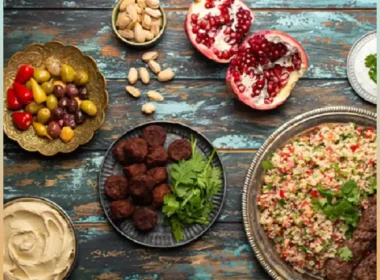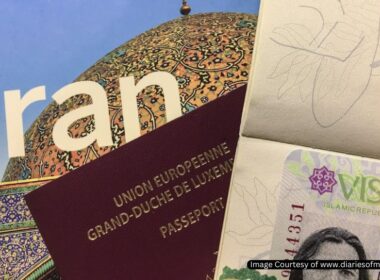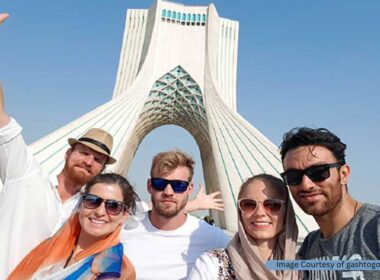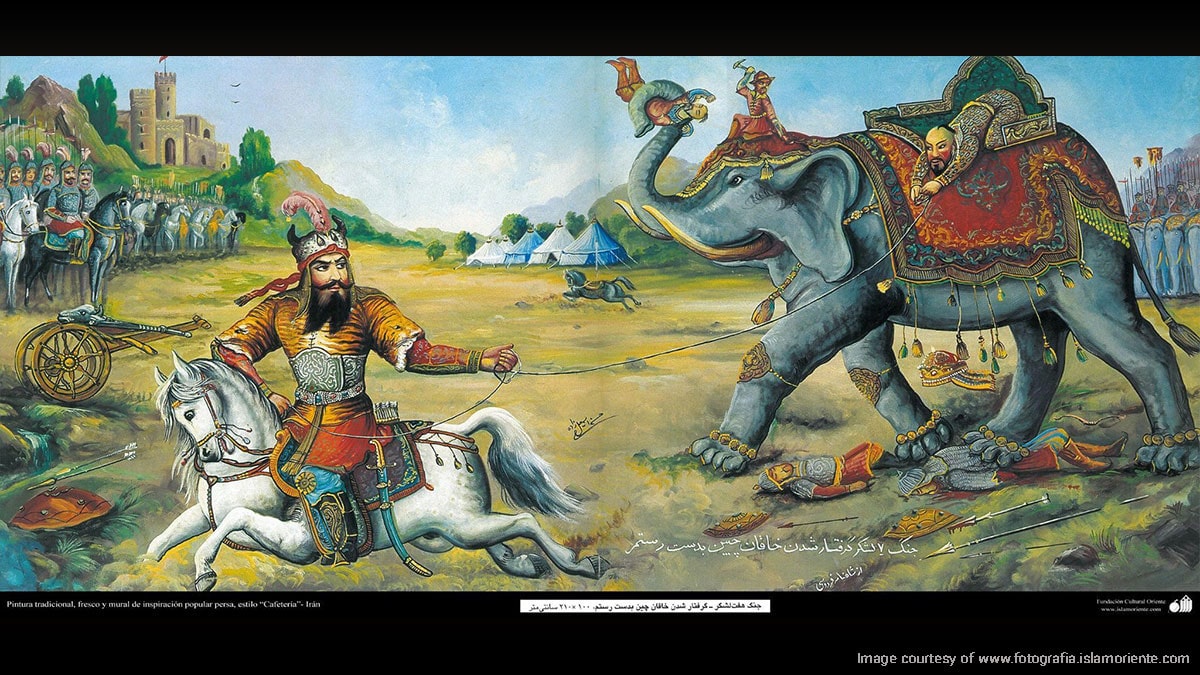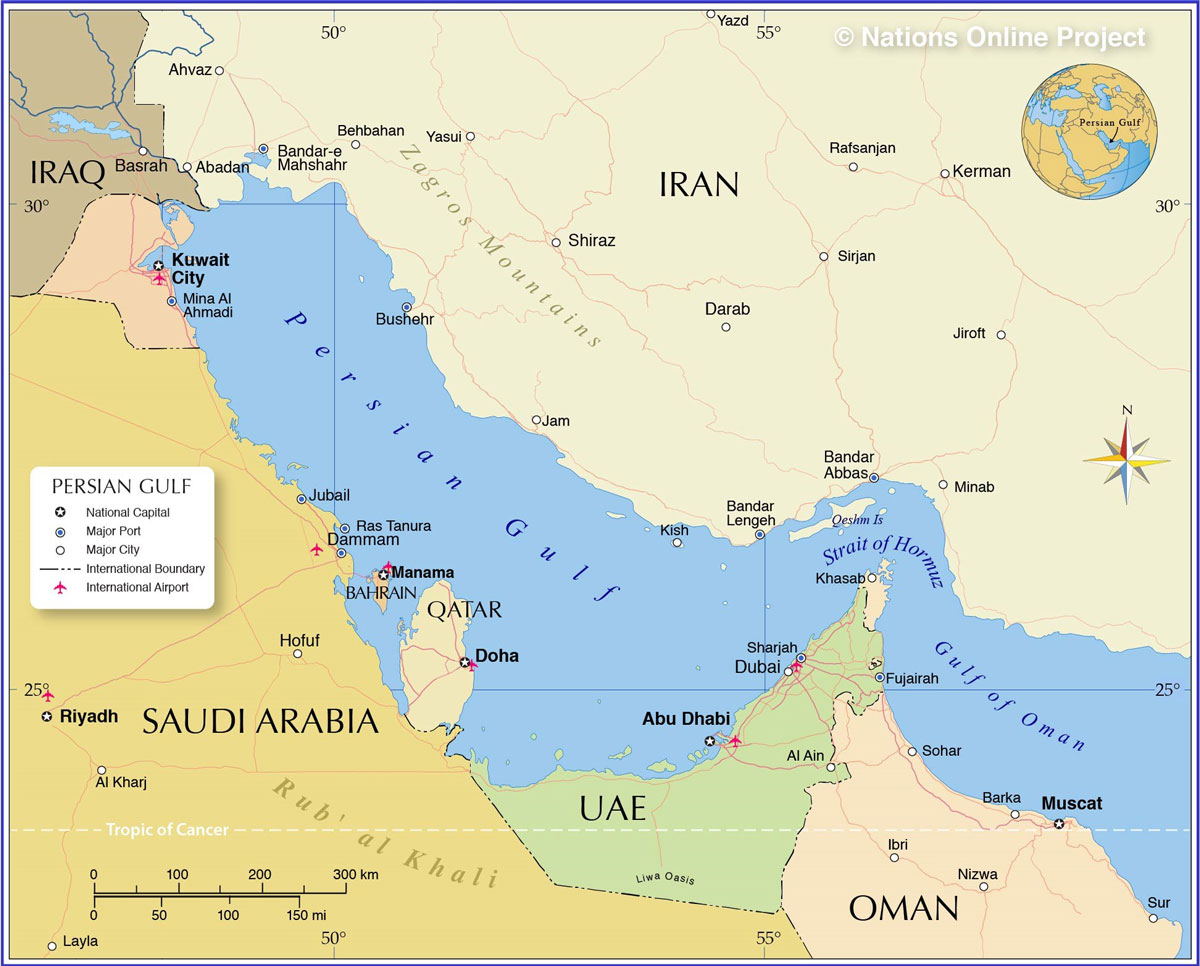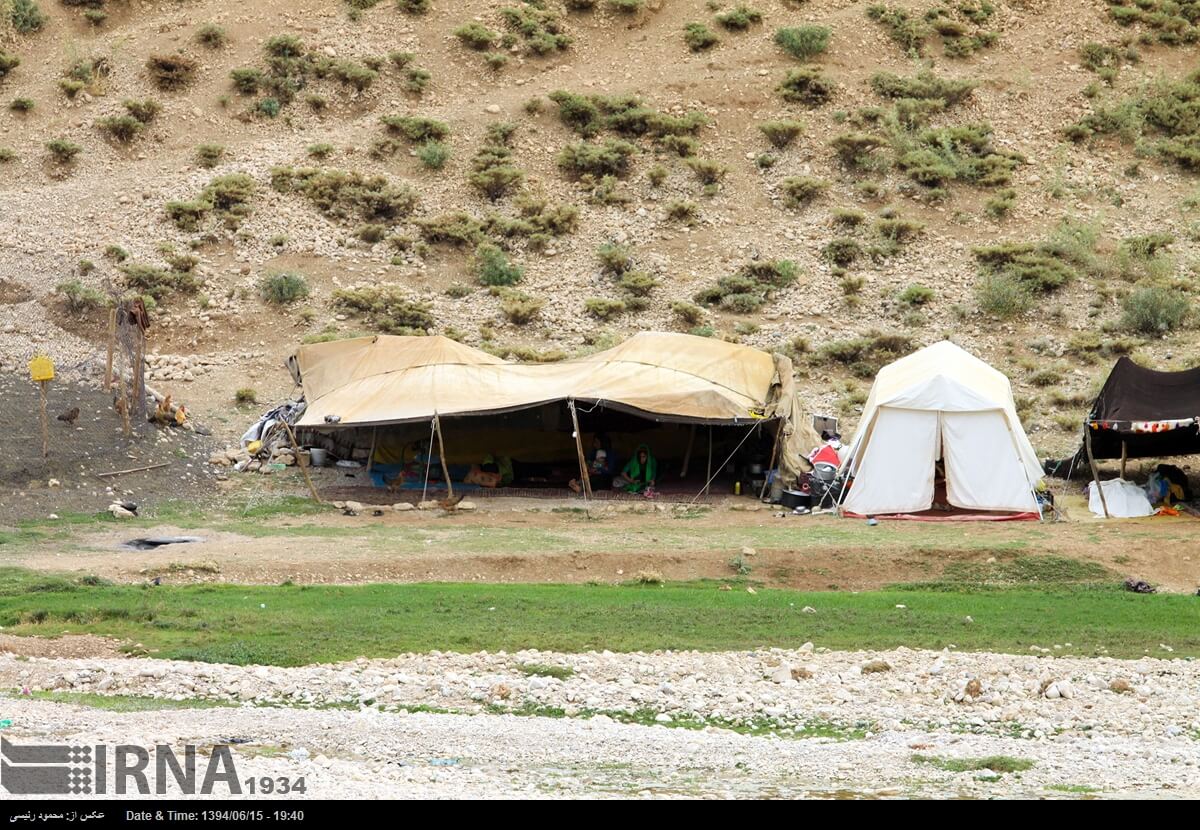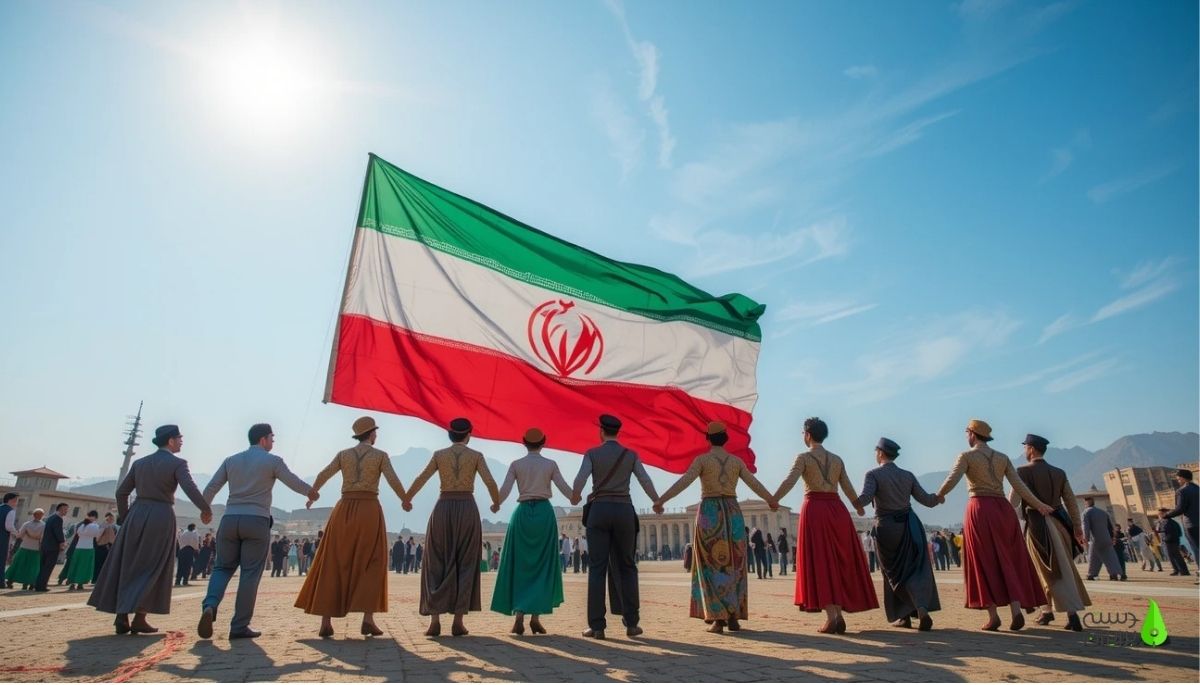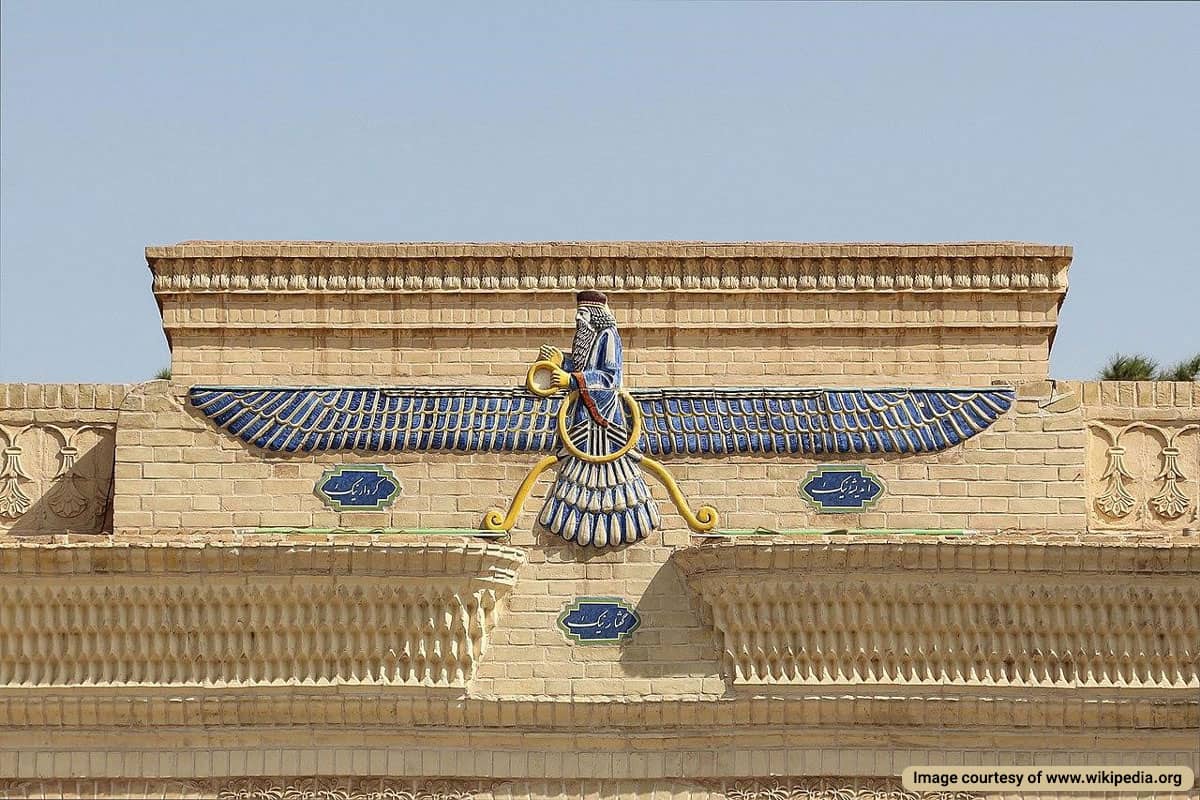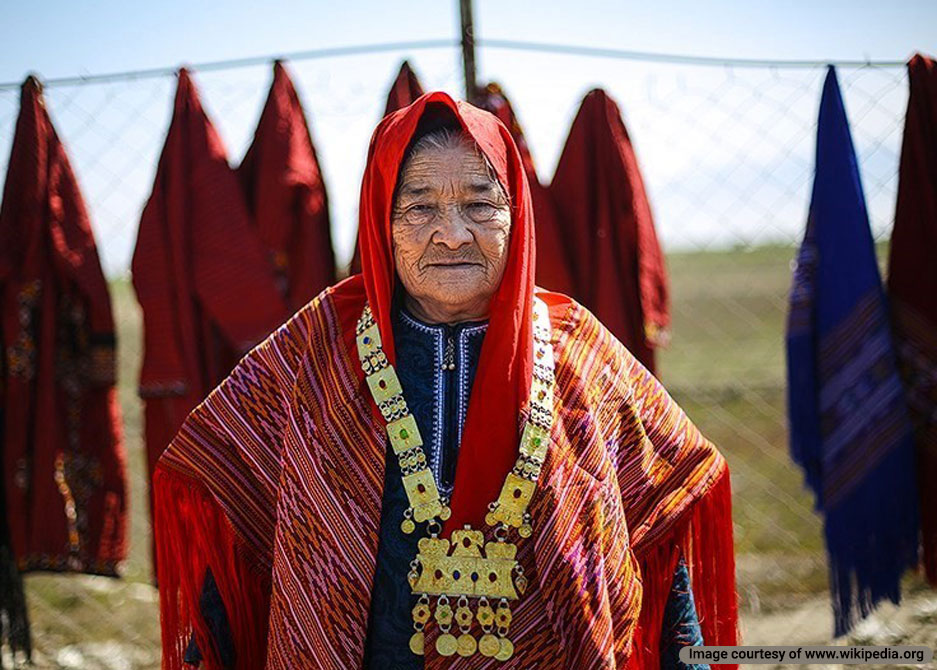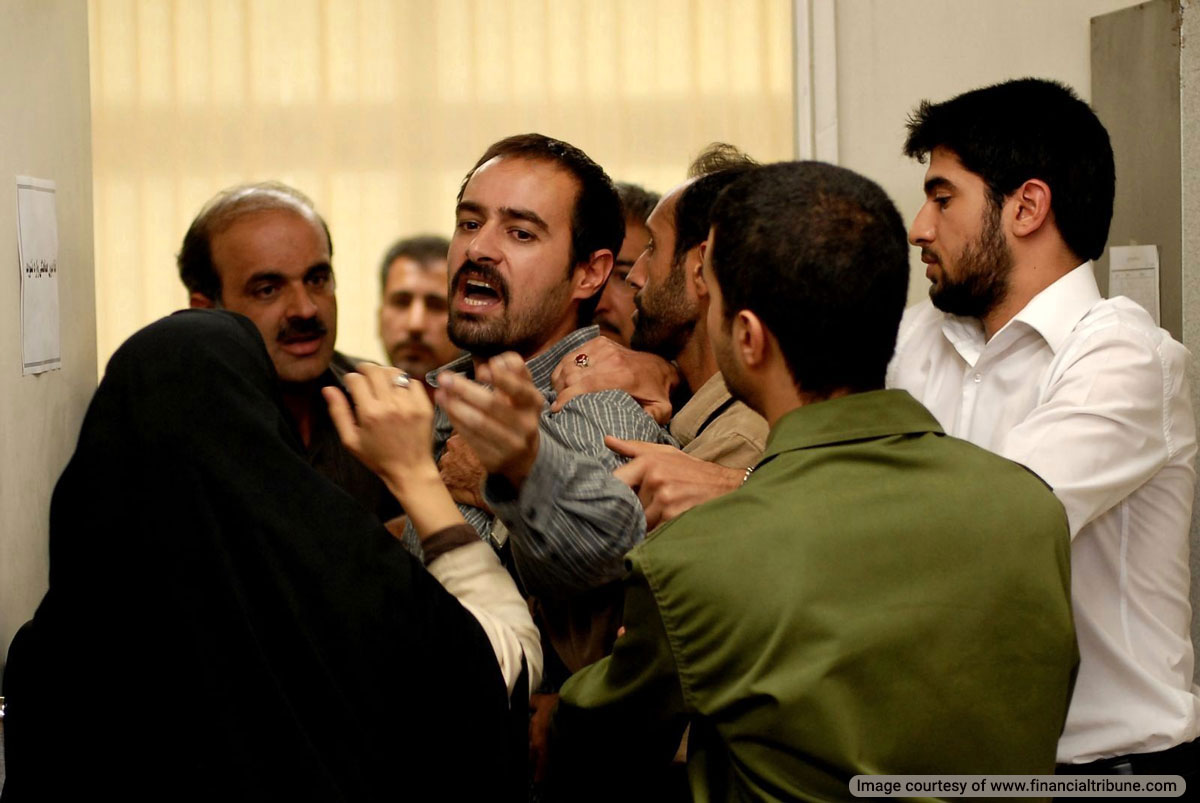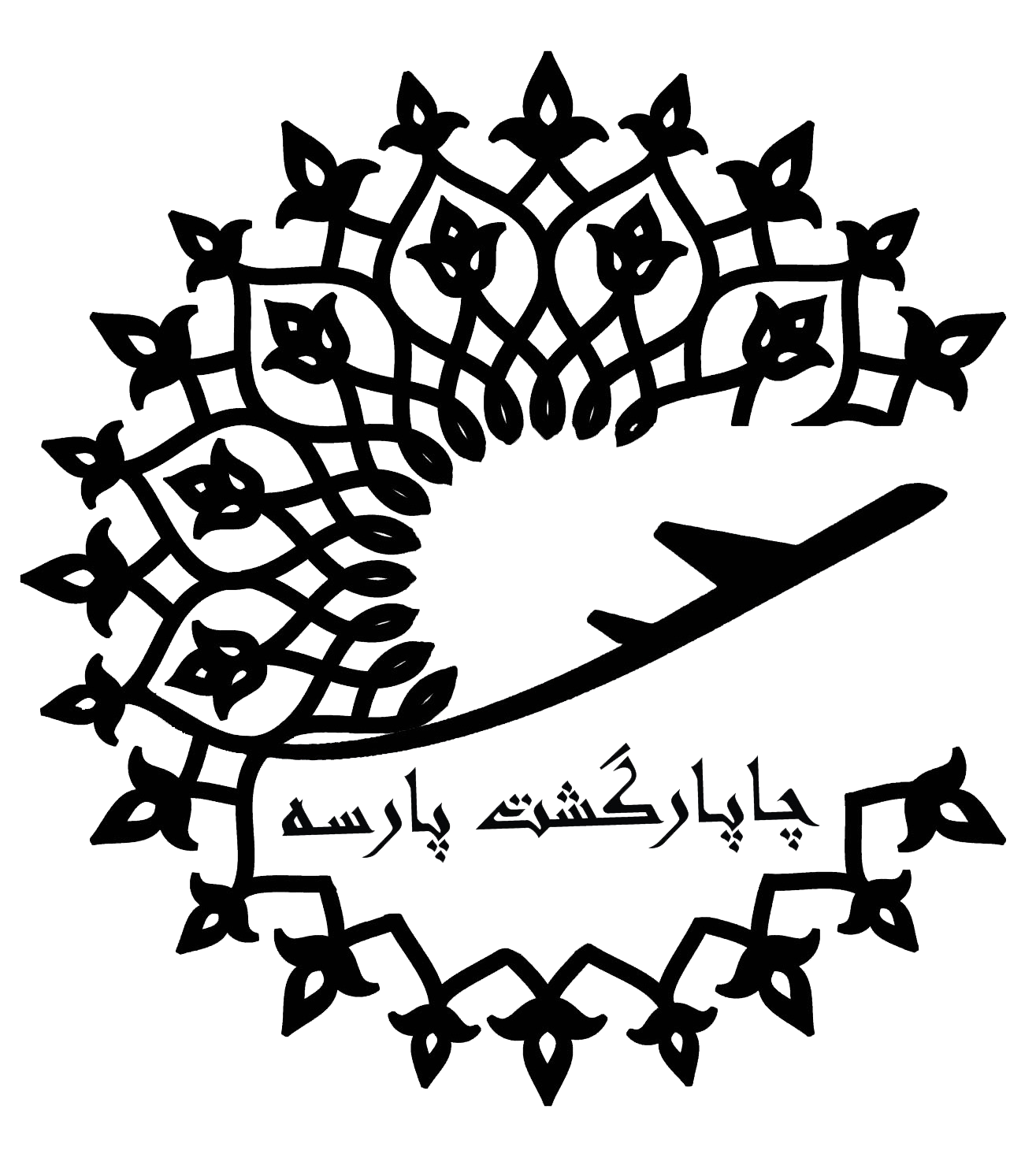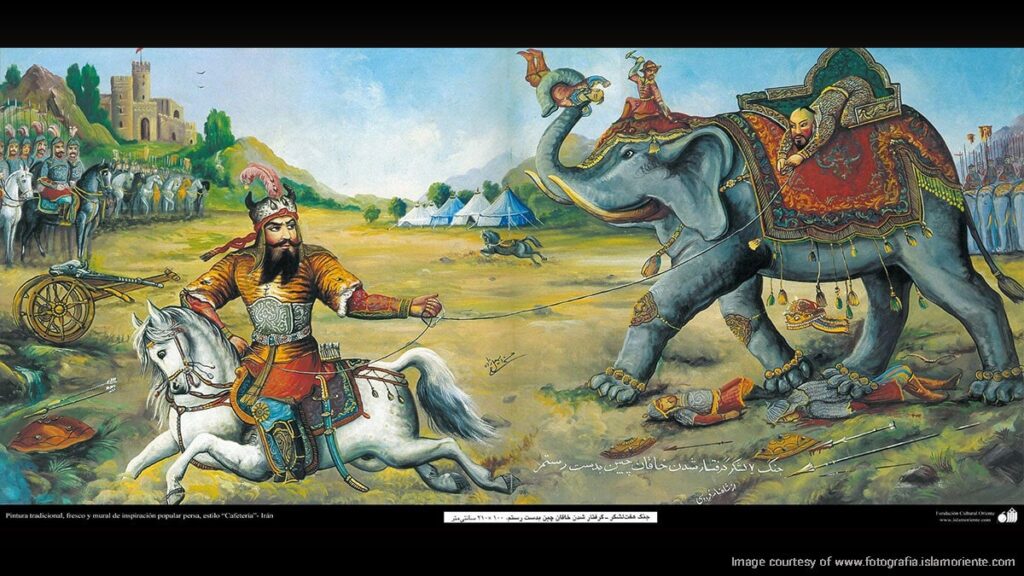
In the vibrant tapestry of Iranian Myths, few figures loom as large as Rostam, the legendary hero created to personify the essence of Iranian identity and resilience. As a central character in Ferdowsi’s epic, the Shahnameh (The Book of Kings), Rostam weaves tales of courage, loyalty, and tragedy that resonate deeply within the heart of Iranian culture.
His story transcends mere heroism, it embodies the values and aspirations of a nation, reflecting the struggles and triumphs of the Iranian people throughout history. In this blog post, we will delve into the life of Rostam, his legendary feats, and the enduring legacy he has left on Persian literature and culture.
Historical Context of Rostam
To appreciate the significance of Rostam in Iranian culture, we must first define the historical context in which he was created. The Shahnameh, written by the poet Ferdowsi in the 10th century, serves as an epic retelling of Iran’s history—from its mythological origins through the rise and fall of dynasties. Ferdowsi’s work was not just a literary masterpiece but a cultural statement aimed at reviving the Persian language and identity following the Arab conquest of Iran.
Rostam emerged from this epic as a warrior and as a symbol of a cultural renaissance. His heroic deeds are set against the backdrop of a great empire—often considered the Sassanid Empire—that fostered art, literature, and philosophy. Rostam’s tales intertwine with historical events, illustrating the rich heritage of a people who have fought to preserve their identity through centuries of turmoil.
Rostam’s Birth and Early Life
The origins of Rostam are steeped in myth, beginning with a legendary birth. According to the Shahnameh, Rostam is the son of Zal, a mythical albino hero from a line of legendary heroes, known for his extraordinary strength and wisdom, and Rudabeh, a descendant of Zahhak, a noblewoman known for her beauty and intelligence. Rudabeh gave birth to him in the foothills Alborz Mountains, a place shrouded in mystery where Rostam’s father, Zal was raised by the legendary bird Simurgh.
According to Shahnameh, the birth of Rostam was a complicated process. Simurgh instructed Zal to summon a Zoroastrian priest and a Tabib (doctor). They performed the process of Caesarean section, hence known as Rostamineh or Rostam Zaie (birthing Rostam) in Persian literature.
Zal, despite being born with white hair, was considered a figure of great wisdom and strength. He had been raised by the mythical Simurgh, a benevolent bird that bestowed him with a wealth of knowledge. When Rostam was born, the world celebrated his arrival, for it was prophesied that he would be a great hero destined to protect Iran Zamin (the land of Iran).
As Rostam grew, he exhibited immense strength and skill in battle. His childhood was filled with physical training, spiritual growth, adventure, and the forging of friendships with other warriors. The bond he formed with his horse, Rakhsh, was particularly noteworthy. Rakhsh became his trusted steed and a symbol of loyalty throughout his adventures.
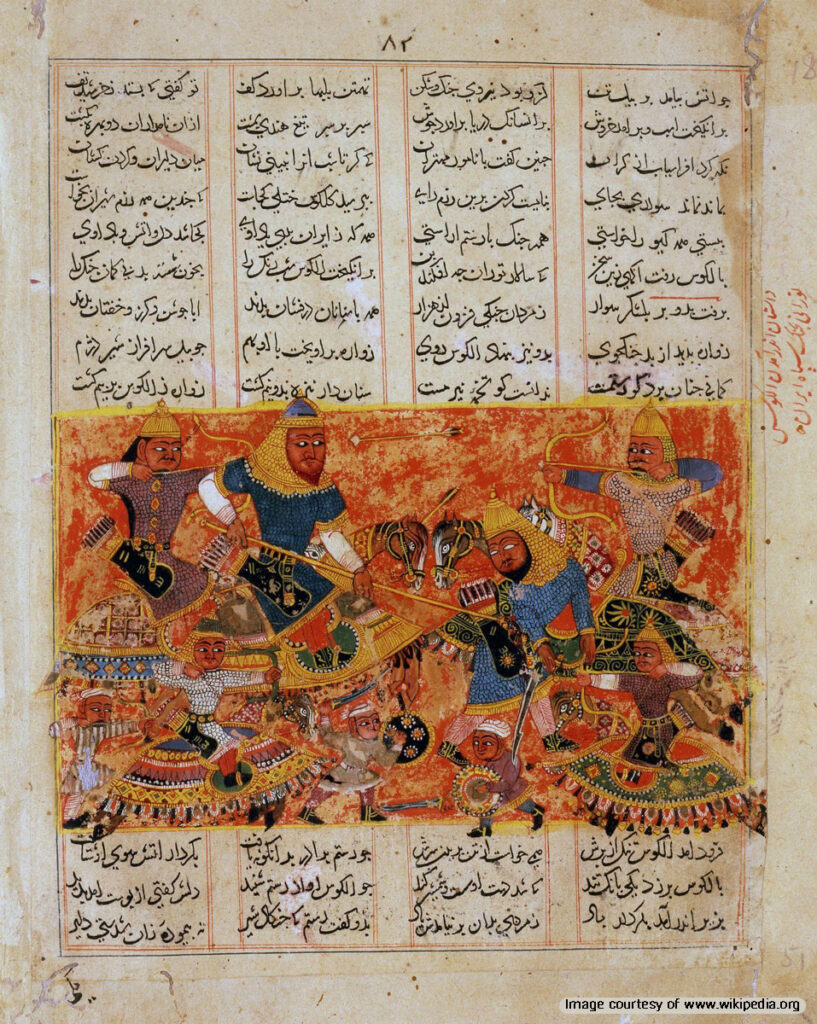
Rostam’s Legendary Feats and Adventures
The tales of Rostam’s adventures are both thrilling and profound, reflecting the essence of a hero’s journey.
Haft Khan-e Rostam (The Seven Labors)
Among his most renowned exploits are the Seven Labors of Rostam, a series of challenges resembling the Greek myth of Hercules. These labors not only test his strength but also showcase his unyielding spirit and commitment to justice. After the capture of King Kay Kavus by the Div-e Sepid (White Demon) in Mazandaran, Rostam embarked on a journey to free the king and his companions.
Khan-e Aval (Labor 1): The Lion
Rostam, resting after a long journey, unknowingly has Rakhsh fend off and kill a lurking lion, showing the horse’s loyalty and bravery.
Khan-e Dovom (Labor 2): Passage Through Desert
Battling through a scorching desert, Rostam finds water by divine intervention and survives, teaching Rakhsh to alert him rather than fight alone.
Khan-e Sevom (Labor 3): Battle with the Dragon
Rostam, after multiple disturbances by Rakhsh, finally sees and kills a fire-breathing dragon, showcasing their teamwork and persistence.
Khan-e Chaharom (Labor 4): The Simurgh’s Rescue
Severely wounded by demons, Rostam is healed by the mythical bird Simurgh and defeats the demons, promising to call on her only in dire need.
Khan-e Panjom (Labor 5): The Enchanted Garden
In an enchanted garden, Rostam resists a sorceress’s charms, breaks her spell, and frees captivated souls, highlighting his willpower and righteousness.
Khan-e Sheshom (Labor 6): The Sea Monster
Rostam faces and defeats a sea monster while navigating a vast sea on a makeshift raft, demonstrating his adaptability and strength.
Khan-e Haftom (Labor 7): Confrontation with the White Demon
Rostam blinds and kills the terrifying White Demon after a fierce battle, securing his place as a legendary hero and completing his arduous journey.
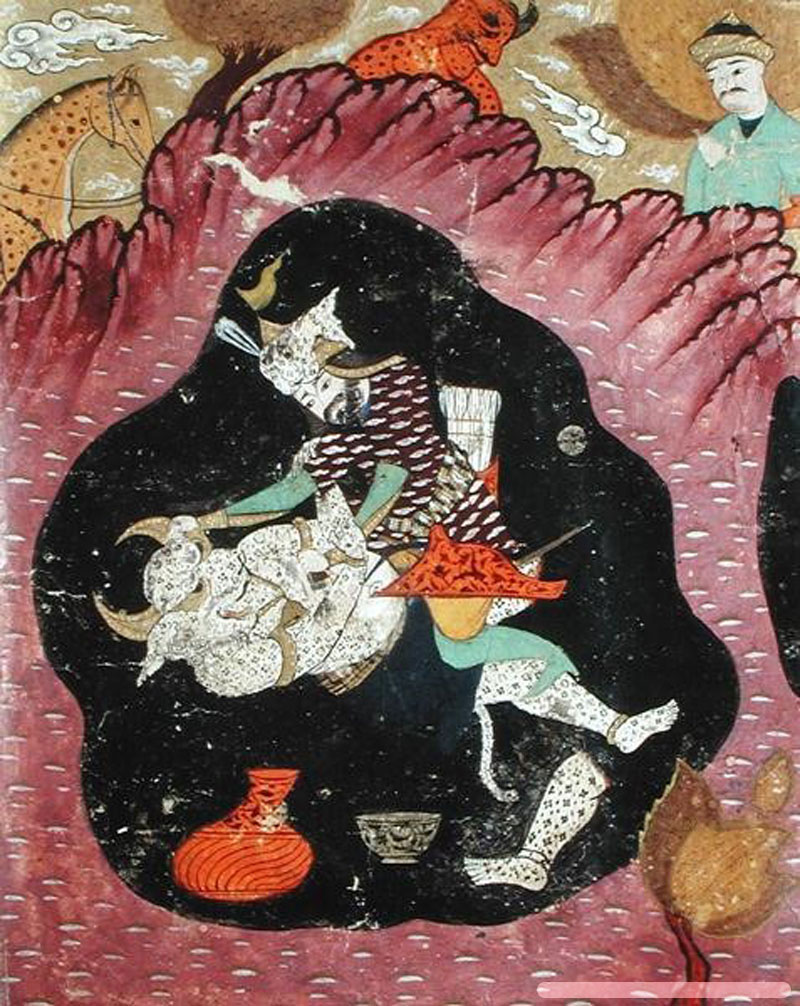
Capturing the Ifrit (Evil Spirit)
Rostam’s encounter with evil spirits further cements his reputation as a hero. He captures an ifrit after a long and arduous battle, showcasing his relentless determination.
Rostam and Esfandiar
Rostam and Esfandiar, two of the most legendary heroes in Persian mythology, are central figures in the epic “Shahnameh” by Ferdowsi. Esfandiar, a prince and Ruyin-Tan (invincible) warrior is sent by his father, King Goshtasp, to bring Rostam to the royal court in chains. This mission is part of a broader scheme by Goshtasp, who is jealous of Rostam’s fame and desires to elevate his own son’s status.
Initially reluctant to fight, Rostam respects Esfandiar and tries to avoid conflict. However, Esfandiar is bound by his royal duty and the promise of kingship. The clash becomes inevitable, leading to one of the most dramatic encounters in Persian lore. Esfandiar, whose body is invulnerable due to a divine blessing, seems unbeatable.
In a desperate bid, Rostam seeks counsel from the Simurgh, the mythical bird that had once saved his life. The Simurgh reveals a hidden weakness: Esfandiar’s eyes are his only vulnerable spots. Armed with this knowledge, Rostam crafts a special arrow and, with a heavy heart, shoots Esfandiar in the eyes, leading to his death. This tragic event leaves Rostam in deep sorrow, marked forever by the consequences of this fateful duel.
Their story is a poignant exploration of duty, honor, and the tragic costs of heroism. It highlights the inevitable clash between two larger-than-life figures whose destinies were bound to collide.
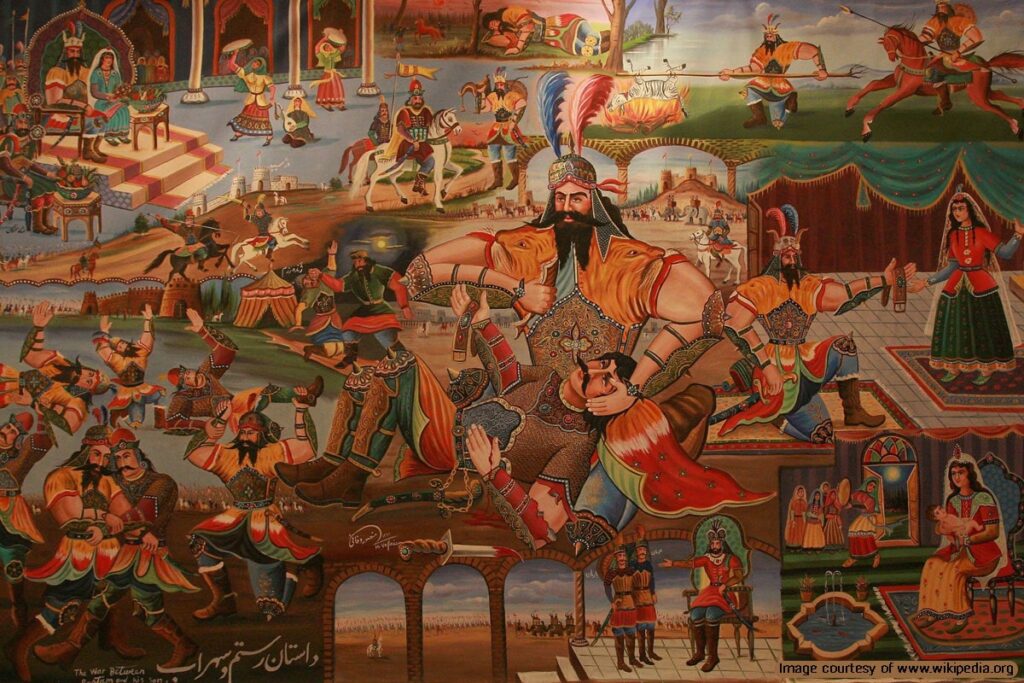
The Tale of Rostam and Sohrab
No story associated with Rostam is as tragic and impactful as the tale of Sohrab, his son, whom he unknowingly battles. Their clash, marked by a tragic misunderstanding, serves as a touching exploration of fate, pride, and sorrow. Rostam defeats Sohrab but, upon learning of his identity, is overcome with grief. This heart-wrenching narrative touches on themes of family, destiny, and the often-painful consequences of conflict—a narrative that resonates universally.
Rostam’s Death
The death of Rostam, one of the greatest heroes in Persian mythology, is a story fraught with treachery and tragedy. Despite his unparalleled strength and numerous heroic deeds, Rostam’s end comes not through a mighty battle but through a sinister betrayal.
Rostam’s death is orchestrated by his half-brother, Shaghad, who harbors deep resentment and jealousy towards the legendary hero. Shaghad, plotting revenge, collaborates with the king of Kabul, who is also eager to see Rostam fall. Together, they devise a cunning plan to trap Rostam.
Invited under the guise of reconciliation and familial bonding, Rostam, along with his loyal horse Rakhsh, ventures to Kabul. There, Shaghad and the king dug deep pits lined with spears and concealed them with leaves and dirt. As Rostam rides towards his brother, both he and Rakhsh fall into one of these hidden traps.
Severely wounded and trapped, Rostam realizes the betrayal but attempts to fight on, summoning his incredible strength to shoot arrows at Shaghad, who takes refuge behind a tree. With his final act of defiance, Rostam’s arrow pins Shaghad to the tree, but not before the great hero and his mighty steed succumb to their injuries.
Rostam as a Symbol of Iranian Identity
Rostam transcends the basic characteristics of fictional heroism, he embodies the ideals of strength, integrity, and loyalty. As he protects his kingdom and fights injustice, he becomes a symbol of Iran’s persistence and pride. His character resonates deeply with the aspirations of the Iranian people, embodying their relentless pursuit of justice and honor.
Throughout the ages, Rostam has served as a rallying figure for Iranians, especially during times of adversity. His tales remind people of their heritage, fostering a sense of unity and belonging. In a fashion akin to other cultural heroes around the globe, Rostam acts as an archetype for the ideal hero: one who faces insurmountable odds and triumphs through courage and virtue.
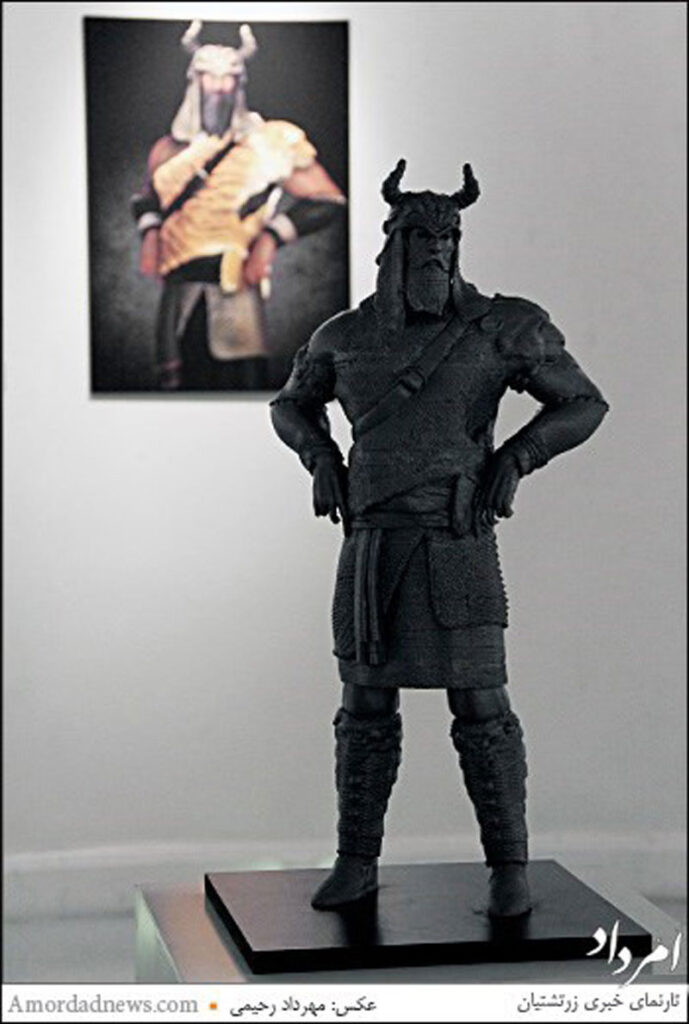
Rostam in Persian Literature and Arts
The impact of Rostam extends far beyond the pages of the Shahnameh. His legend has inspired countless works of Persian literature, painting, and performance art. Persian miniatures often depict scenes of Rostam’s grandeur, illustrating his battles, relationships, and the lush landscapes of ancient Persia.
Rostam’s tales have been an admired source of inspiration for Persian poets throughout history. One can find references to his valor, tragic fate, and moral lessons woven into the works of many famed poets, including Saadi, Hafez, and Nizami. An example of a well-known translated poem that captures Rostam’s essence is from Nizami’s Shahnameh:
“In valor, he stood like a mountain, all foes in awe of his might,
With strength unmatched in battle, he radiated light.
Yet, beneath the proud exterior, a heart filled with pain,
For the fates intertwined the paths, love’s loss—a brother’s bane.”
This translated excerpt exemplifies how Rostam embodies both strength and vulnerability, highlighting the duality of his character as a hero and a tragic figure.
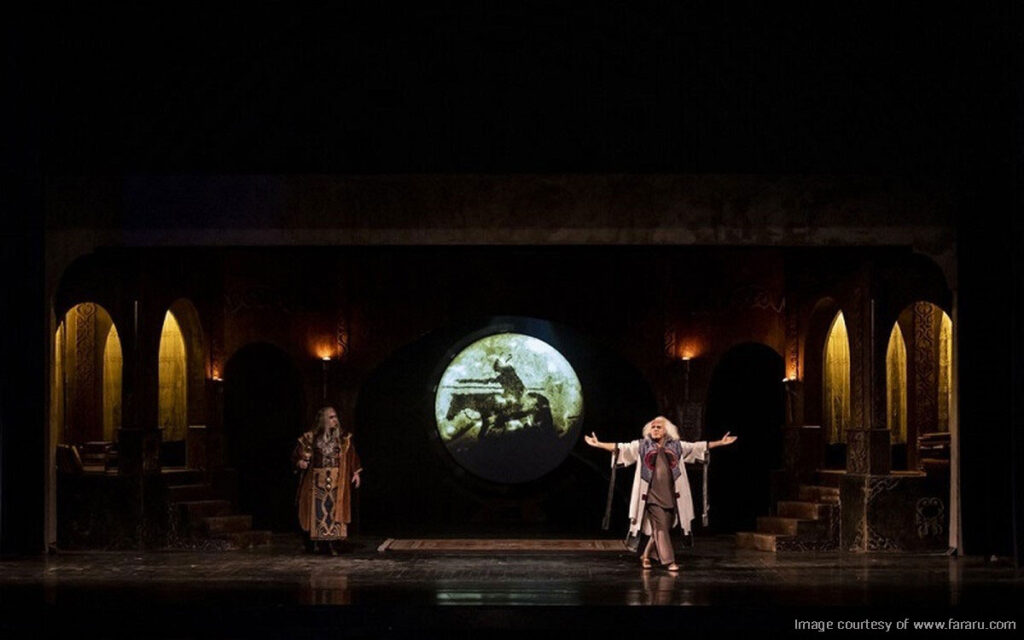
The Legacy of Rostam
Rostam’s legacy remains powerful in modern Iran. His stories are shared in homes, schools, and cultural gatherings, ensuring that new generations remain connected to their roots. As a national hero, Rostam is honored during cultural events and national celebrations, serving as a reminder of the enduring spirit of the Iranian people.
In contemporary discussions, Rostam is often referenced alongside other national figures worldwide, symbolizing the universal struggle for justice and identity. His tale resonates beyond borders, reminding individuals of the importance of bravery in facing life’s challenges.
The spirit of Rostam is also visible in the challenges faced by the Iranian people today. As they navigate the complexities of modern life while maintaining their identity, Rostam’s virtues serve as guiding principles—encouraging resilience, honor, and hope.
Frequently Asked Questions About Rostam
If you have any other questions about Rostam and related stories, let us know in the comments. We will respond as soon as possible.
Who is Rostam in Persian mythology?
Rostam is a legendary hero from the Shahnameh, the epic poem written by Ferdowsi. He is known for his incredible strength, courage, and numerous heroic deeds.
What are the Seven Labors of Rostam?
The Seven Labors of Rostam is a series of challenges he undertakes, showcasing his exceptional strength and determination.
What is the significance of the story of Rostam and Sohrab?
The tale of Rostam and Sohrab is both tragic and profound, revolving around a battle between Rostam and his son Sohrab, whom he does not recognize. This story explores themes of fate, misunderstanding, and the consequences of conflict, highlighting the emotional weight of their encounter.
How has Rostam influenced modern Iranian culture?
Rostam continues to be a symbol of national pride and identity in modern Iran. His stories are celebrated in literature, art, and cultural events, inspiring new generations to connect with their heritage and values.
Why is Rostam considered a national hero of Iran?
Rostam is regarded as a national hero because he embodies the virtues of strength, courage, and justice that resonate with the Iranian people’s identity. His stories reflect the struggles and aspirations of the nation, serving as a unifying symbol throughout history.


